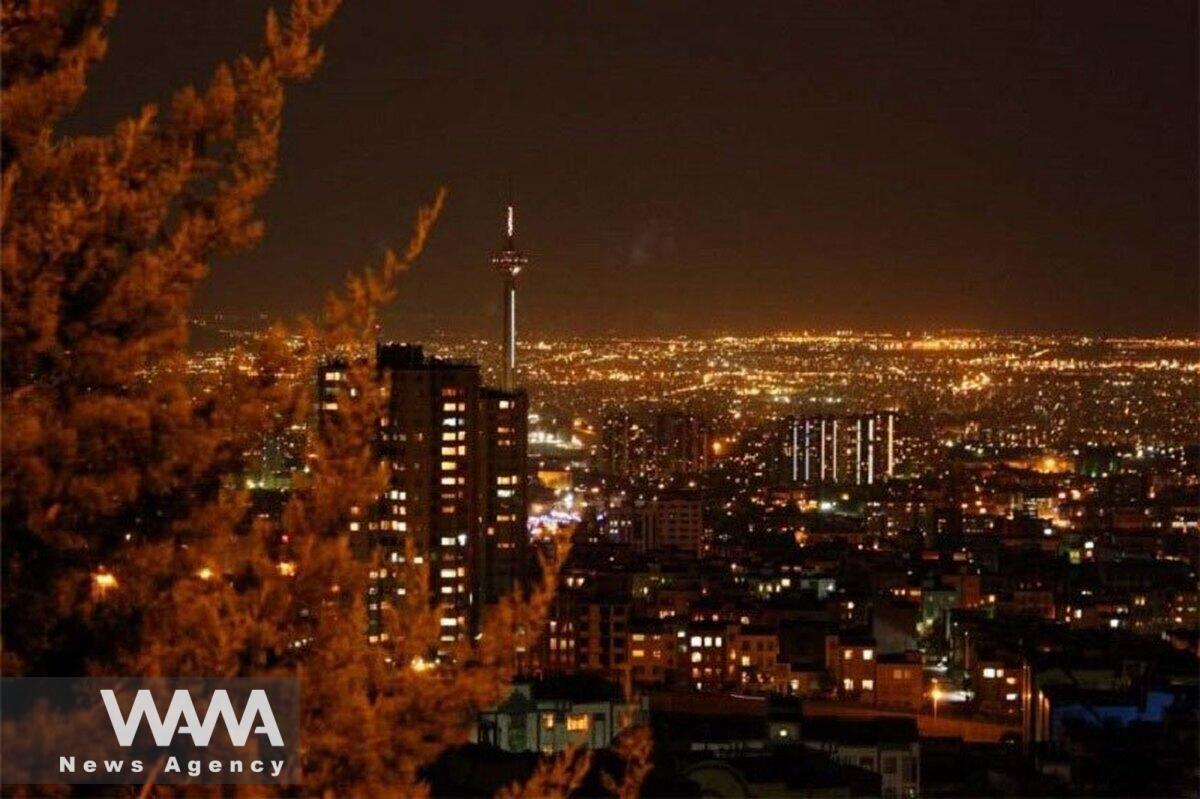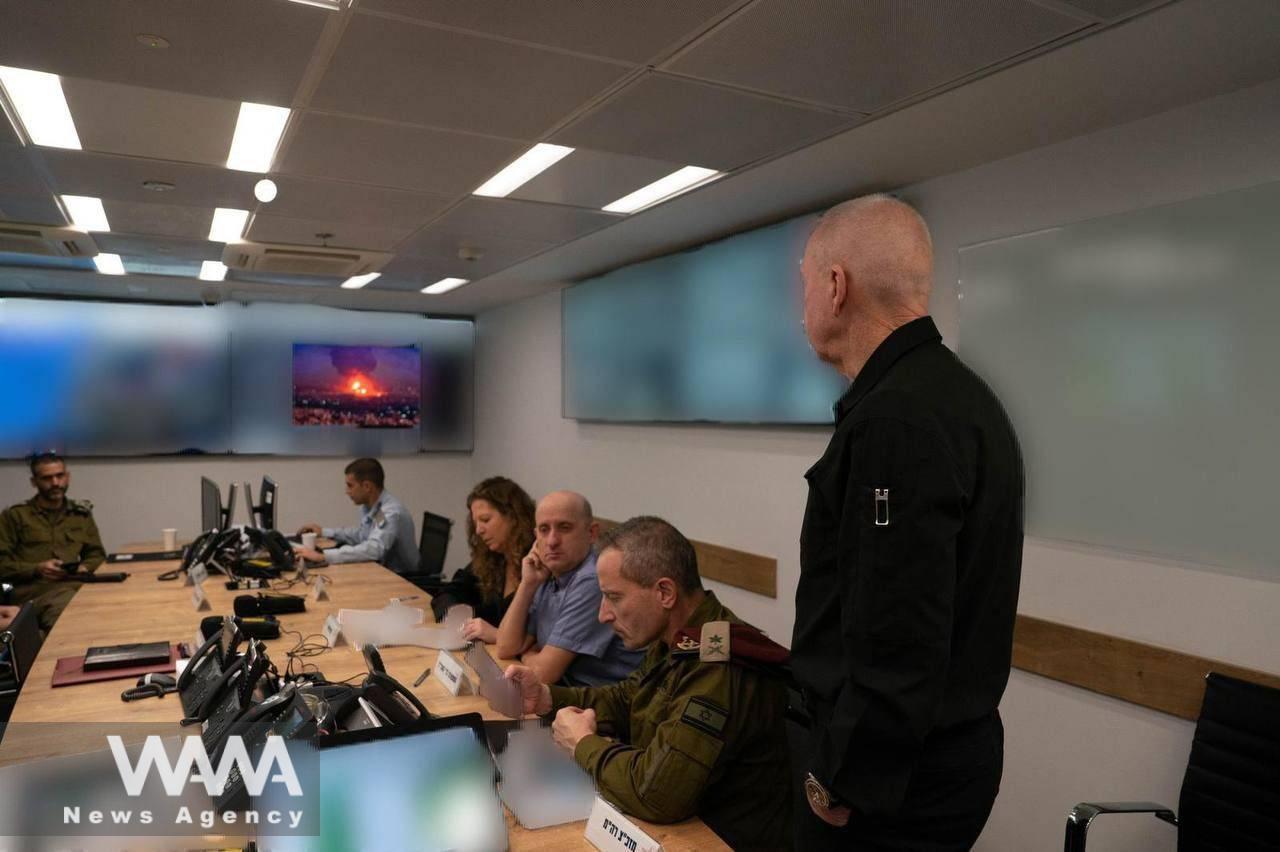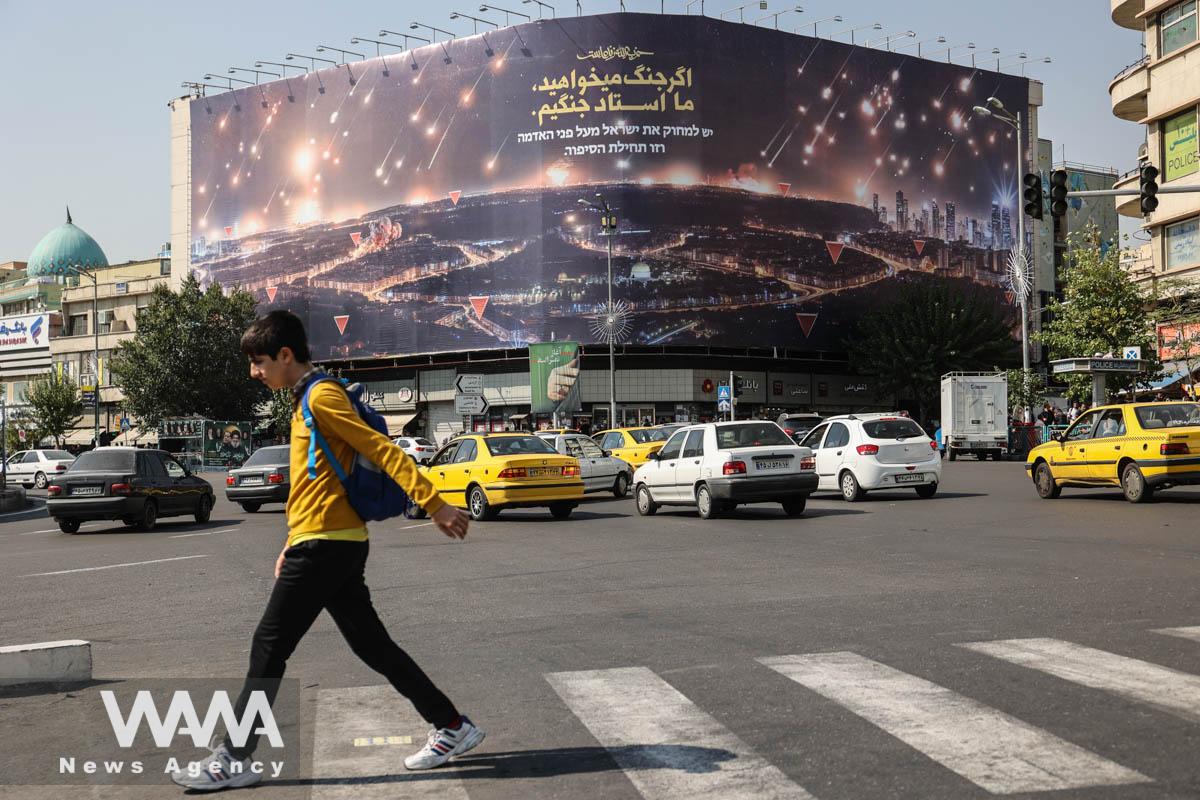From Israel’s Shelters to Tehran’s Rooftops: Reflections on a Failed Attack
WANA (Oct 26) – In the early hours of Saturday, October 27, Israel launched actions targeting military facilities in Iran, which an Israeli military spokesperson described as a response to recent Iranian actions against Israel. According to Daniel Hagari, this was in retaliation for what Israel terms “Iranian threats.”
Around 2:30 a.m., explosions were heard in western Tehran, causing windows to shake in some areas and sparking public curiosity and concern. However, no damage was reported, and emergency services confirmed no incidents within the city.

Despite the explosions, no missile or aircraft activity was observed over Tehran. Yet, Iran likely disregards whether a missile landed or was intercepted mid-air; the capabilities of Iran’s air defenses are designed to neutralize threats. Thus, Israel’s strike does not exempt it from a calculated Iranian response at a time deemed appropriate.
Between 4:30 and 5 a.m., additional explosions echoed in eastern Tehran. According to Tehran Air Defense’s public relations office, these sounds were attributed to Iran’s defensive systems responding to perceived aerial threats.
East Tehran Right Now / 06:15 A.M #Iran #Israel pic.twitter.com/IGJN0kSzuy
— WANA News Agency (@WANAIran) October 26, 2024
According to Iran’s Air Defense Command, areas in the provinces of Tehran, Khuzestan, and Ilam were targeted, with Iran’s integrated air defense system intercepting many of these strikes effectively. The air defense reported only minimal damage, with no significant threat to the country’s vital infrastructure.
Later that morning, Daniel Hagari announced the end of this operation in a video message, describing it as a response to “Iranian threats.”

Domestically, daily life across Iran continued unaffected. Imam Khomeini and Mehrabad airports operated as usual, with flights resuming their normal schedule by 9 a.m. Schools and educational centers also reopened normally, and public life proceeded with no indications of foreign threats.
Images circulating of Israeli Prime Minister Benjamin Netanyahu and Defense Minister Yoav Gallant in an underground shelter on high alert received widespread media attention and were interpreted by many as a sign of Israel’s anxiety over Iran’s possible response.
One Israeli media outlet in a sarcastic comment remarked, “People in Tehran were sleeping, oblivious to any attack, while we were on high alert. Did we attack them, or vice versa? Why is the Prime Minister underground?”

These images of Israeli officials in shelters, juxtaposed with Iranians calmly on rooftops, highlighted the contrast in confidence between the two sides.
Following these events, some media outlets and social media users attempted to exaggerate Israel’s attacks by sharing old, unrelated images, including photos from a fire at Tehran’s oil refinery in 2021, which had no connection to recent events.
Social media users humorously reacted to the attack, with some posting rooftop images of Tehranis and mocking Israelis’ retreat to shelters. An Arab user wrote, “The attack’s purpose seemed to be to wake people up for dawn prayers! A month of threats, a week of leaked attack plans, and the result was only noise. Israel is collapsing, and its regime is on the path to downfall.”
A social media user in Iran shared this humorous video, ironically referencing Israelis heading to shelters, and wrote:
“Instead of going to a shelter to check the sounds, we went up to the rooftop.”#Iran #Israel pic.twitter.com/XL0CiXGkGN— WANA News Agency (@WANAIran) October 26, 2024
Previously, on October 2, the Islamic Republic of Iran had retaliated with “Operation True Promise 2” against Israeli military and intelligence bases. Following these recent hostilities, informed sources have indicated that a “True Promise 3” operation may soon respond to Israel’s ongoing provocations.
Ultimately, despite Israel’s media buildup, these strikes resulted in nothing beyond a few explosions and successful interceptions by Iran’s air defenses. As Tehran’s residents resumed their daily routines, what Israel had attempted to portray as a major military offensive ultimately amounted to a futile display, with Iran’s defense measures effectively neutralizing the incident, leaving no threat to public safety or critical infrastructure.

An anti-Israel billboard is displayed on a building in Tehran, Iran, October 7, 2024. Majid Asgaripour/WANA (West Asia News Agency)













